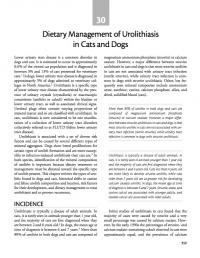
Lower urinary tract disease is a common disorder in dogs and cats. It is estimated to occur in approximately 0.6% of the owned cat population and is diagnosed in between 3% and 13% of cats presented for veterinary care.1 In dogs, lower urinary tract disease is diagnosed in approximately 3% of dogs admitted to veterinary col- leges in North America.2 Urolithiasis is a specific type of lower urinary tract disease characterized by the pres- ence of urinary crystals (crystalluria) or macroscopic concretions (uroliths or calculi) within the bladder or lower urinary tract, as well as associated clinical signs. Urethral plugs often contain varying proportions of mineral matter and so are classified with urolithiasis. In cats, urolithiasis is now considered to be one manifes- tation of a collection of lower urinary tract disorders collectively referred to as FLUTD (feline lower urinary tract disease).
Urolithiasis is associated with a set of diverse risk factors and can be caused by several different types of mineral aggregates. Dogs show breed predilections for certain types of urolith formation and are more suscep- tible to infection-induced urolithiasis than cats are.3 In both species, identification of the mineral composition of uroliths is important because dietary treatment or management must be directed toward the specific type of urolith present. This chapter reviews the types of uro- liths found in dogs and cats, historical shifts in canine and feline urolith composition and location, risk factors for their development, and dietary management to treat urolithiasis and to prevent recurrence.